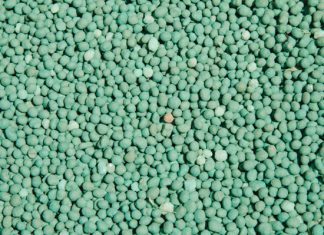July 2017
OWEN RHODE, ARC-Grain Crops, Potchefstroom
Soil is a dynamic resource that sustains life processes and is an important key in food security. Pathogens affect plant health, which threaten sustainable agriculture. Chemical fertilisers are known to kill pathogens and weeds and increase yields, but have detrimental side effects on plant and soil health.
Alternatively, biological agents such as plant growth promoting rhizobacteria show potential to lower the risk of such fertilisers. Rhizobacteria can play a determining role in soil fertility, the suppression of pathogens and improvement of plant growth.
What are plant growth promoting rhizobacteria?
The rhizosphere (the 1 mm – 2 mm thick layer of soil surrounding plant roots) is the zone of maximum microbial activity where the majority of soil micro-organisms (bacteria and fungi) reside to utilise compounds released from crop roots for energy.
Some micro-organisms present in the rhizosphere appear to have no direct consequence on plant growth while others are deleterious and some beneficial to plant growth. Plant growth promoting rhizobacteria are beneficial soil bacteria naturally present in the rhizosphere that enhance plant growth and reduce abiotic stresses through a variety of mechanisms.
They live on or inside plant roots and their modes of action to enhance plant growth and reduce abiotic stresses may be direct or indirect. Bacteria such as Agrobacterium, Arthrobacter, Azotobacter, Azospirillum, Bacillus, Bradyrhizobium, Burkholderia, Caulobacter, Chromobacterium, Erwinia, Flavobacterium, Micrococcus, Pseudomonas, Rhizobium and Serratia resort under plant growth promoting rhizobacteria.
Direct and indirect modes of action
The direct mode of action by plant growth promoting rhizobacteria includes the production of bacterial volatiles (stimulatory effects), auxins, cytokinins (phytohormones that lower ethylene levels in the plant), improvement of the plant nutrient status (liberation of phosphates and micronutrients from insoluble sources and non-symbiotic nitrogen fixation) and stimulation of disease-resistance mechanisms (induced systemic resistance).
Indirect mode of action includes plant growth promoting rhizobacteria acting like biocontrol agents by reducing diseases through stimulation of other beneficial symbioses and protection of the plant through the degradation of xenobiotics such as pesticides in soils.
For plant growth promoting rhizobacteria to be effective, the following conditions should be taken into consideration:
- Overall soil condition, including soil pH, water, minerals, and soil porosity.
- Extent of bacterial colonisation of the root zone.
- Amount and types of plant exudates released.
Relevance of plant growth promoting rhizobacteria to agriculture
Plant growth promoting rhizobacteria promote the recycling of plant nutrients and maintenance of soil structure while increasing root size and root strength in plants. Healthier roots help to produce stronger, more productive plants, which lead to increased agronomic activity and better yields.
Furthermore, fertiliser costs and runoff are reduced because plant growth promoting rhizobacteria permit the efficient use of fertilisers while reducing the need for high quantities of traditional fertilisers such as N, P and K.
Numerous associations between plants and beneficial bacteria show a protective response under restrictive environmental conditions such as drought. Metabolites like polysaccharides produced by plant growth promoting rhizobacteria change the soil structure, and have a positive effect on plants grown during water stress.
Prospects of beneficial micro-organisms
The advantages of plant growth promoting rhizobacteria are increasingly acknowledged by scientists and producers alike. An increased interest in plant growth promoting rhizobacteria indicate that there is a need for additional research and the development of research technologies in this field.
For more information, contact Owen Rhode at RhodeO@arc.agric.za.
Publication: July 2017
Section: Focus on

















